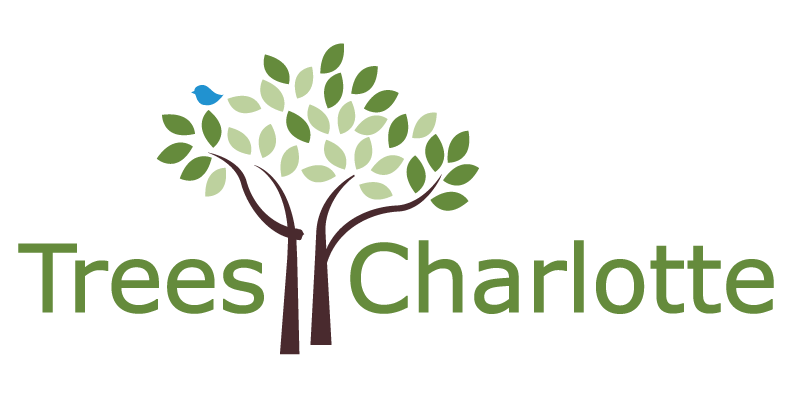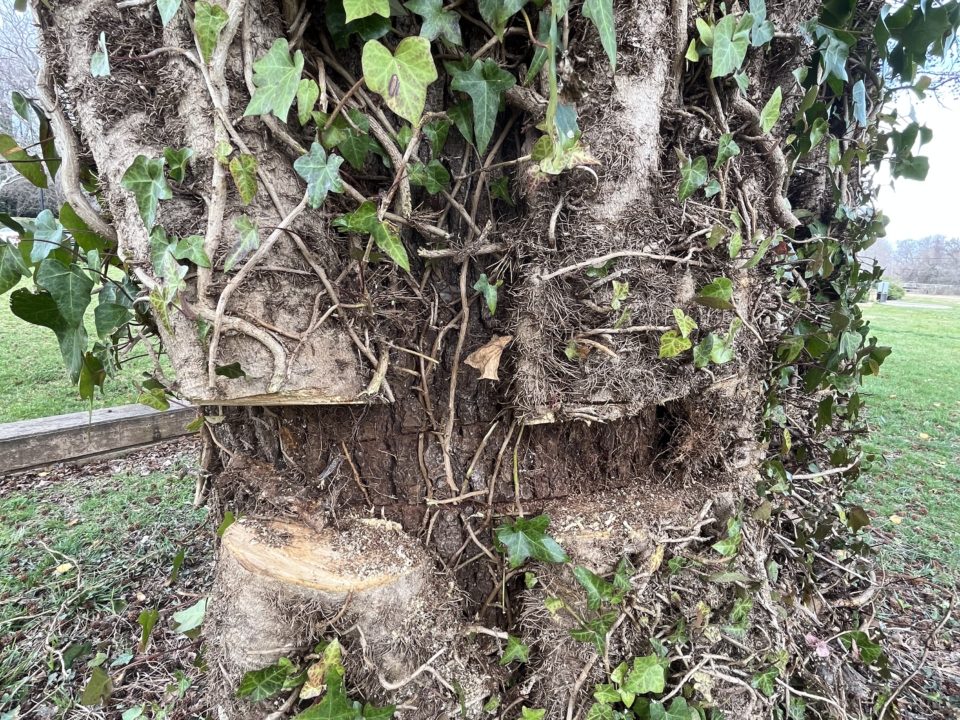Invasive Vine Resource Guide
Have you voted for us at Target?
5.01.24Back to School with TreesCharlotte
8.22.24There’s a difference between an idyllic, ivy-covered cottage and a dying, ivy-covered tree. Most ivy and other vines need physical structures to support growth, and while native vines may use a beautiful garden trellis as support, invasive vines aggressively climb and take over native trees. Once these vines grow into tree canopies, they prevent sunlight from reaching tree leaves, stopping photosynthesis and essentially suffocating native species.

Despite invasive vines’ ability to take over a landscape and decrease biodiversity, some of these are still legally sold in North Carolina. Preventing the introduction of an invasive vine is considerably easier than removal; knowing the difference between an invasive and native species is essential to saving trees.

When looking for a specific native vine at nurseries, ask for it by the scientific name. Some natives, like American wisteria, look and sound similar to invasives, but going by the scientific name will ensure you receive the correct species. If you’re interested in sustainable and native landscaping solutions in Charlotte, check out Crown Town Landscapes.
If you already have a vine problem, the solution is more difficult—but not impossible.

If vines are just starting to establish and are still small, it’s best to pull out the entire plant. Wear gloves and be sure to get the roots! If a vine is already growing up a tree, such as English ivy or kudzu, cut a 1 ft. section of the vine with loppers or hand pruners. Don’t use a machete or any tool that could hurt the tree’s bark. Don’t pull the rest of the vine out of the tree. Without access to its roots, the upper portion of the vine will die, but if pulled, the tree could be damaged further. For fruiting vines, such as oriental bittersweet or porcelain berry, bag and dispose of any accessible fruits. Do not use salt for vine removal, because you will poison the soil for the tree, too!
Be warned: you may encounter poison ivy in the process. Although this is a native vine, it is also an aggressive grower and could kill native trees. But its allergenic properties make removal trickier, and you don’t want to get wrapped up in it accidentally. To identify poison ivy, remember the phrase “leaves of 3, leave them be.” Take extreme care when handling. Wear disposable gloves and wash all clothes separately. All parts of poison ivy are allergenic, even when the vine is dormant or dead.

The secret to vine maintenance is continued removal. It may take more than one round of removal to exhaust the vine. Invasives are aggressive, and you must be as well. Trust us, native trees are worth the fight!
Sources: NC Botanical Garden “Controlling Invasive Plants” booklet

